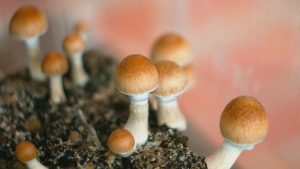Recent years have seen mushroom growing gain in popularity. Both commercial and amateur growers are exploring the world of mycology. A successful mushroom crop is dependent on the preparation of spawns and substrates. They are essential components in the mushroom-cultivation process because they form the base for the growth of a healthy crop. See www.vancouvercoir.com to get more info.

It is a substrate that has been inoculated with mushroom mycelium – the threadlike network of fungal cells responsible for nutrient absorption and growth. Inoculated substrates are inoculated mushroom mycelium (the thread-like web of fungal cell responsible for absorption of nutrients and growth). This is because the choice of spawn determines how well the mushroom will grow, produce and be of high quality.
You can choose from a variety of mushroom spawns, tailored to the specific conditions for growing and species. Most commonly, there are grain spawns, sawdust-spawns, and agar spawns. It is easy to inoculate grain spawn because of its uniform texture. In contrast, sawdust spawn is composed of hardwood wood chips inoculated to mycelium. It’s ideal for growing mushrooms outdoors or preparing bulk substrates. Agar-based spawns are often used in the laboratory to grow specialty varieties or large-scale mushroom propagation.
The spawn must be prepared before it can be placed on a substrate, which is the organic material that will eventually grow mushrooms. Substrates vary depending on which mushroom species are being cultivated, and what conditions they need to grow. Some substrates used are hardwood sawdust or straw, manure composted, coffee grounds and spent brewery grains.
As substrate directly impacts the growth of mycelium, it is vital to select one that suits your mushroom species. The substrate preference of each mushroom type is determined by the species’ nutritional needs and their tolerance to environmental conditions. As an example, oyster mushroom species can thrive in a variety of substrates such as straw, coffee grounds and even cardboard. However, shiitakes prefer hardwood logs or sawdust.
The right substrate is only half the battle. Proper preparation and condition are also essential for optimal growth. Pasteurization or sterilization of the substrate is necessary to remove pathogens and competing microorganisms which could interfere with mushroom growth. Depending on the substrate, you can use heat treatment, chemical disinfection or steam sterilization.
The substrate must be sterilized before it can be inoculated. This is accomplished by either mixing the chosen spawn into the substrate directly or layering between the layers. After sterilization, the substrate inoculated with spawn is incubated in controlled conditions to allow the mycelium time to colonize. This phase of colonization, which is also called “spawning,” is essential for creating a mycelial system and for uniform growth.
The environmental conditions must be altered after the mushroom spawn colonizes the substrate to trigger fruiting, the production of fruiting bodies. The temperature, humidity and light levels are carefully regulated in order to simulate the environment of the particular mushroom. If you pay attention and take the right steps, your mushrooms should start to grow from the substrate.
Conclusion: Spawning and substrates for mushroom growth are crucial components to successful mushroom farming. It is essential to select, manage, and prepare spawn and substrates carefully in order to achieve optimal quality and yields. Growers who understand the relationship between substrates and environmental factors, as well as the relationship between spawn and spawnlings can maximize the yield and quality of mushrooms.